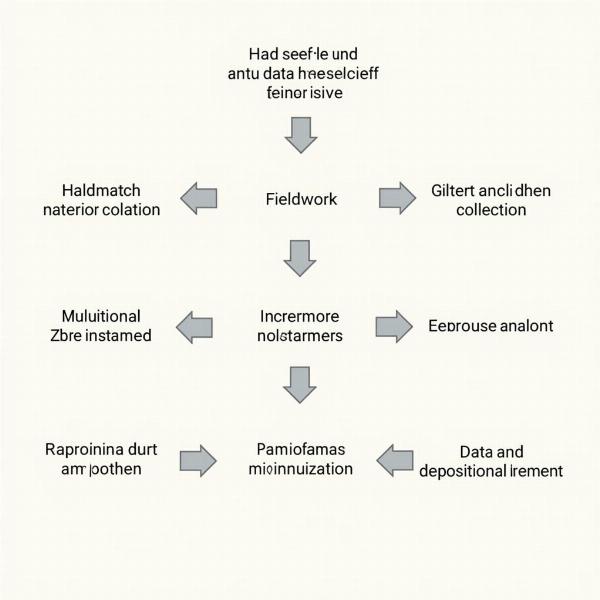Understanding the meaning of “facies” in Hindi is crucial for various fields, especially geology, geography, and ecology. While a direct, single-word translation might not always capture the full nuance, this guide will delve into the various interpretations and applications of “facies” in Hindi, ensuring a comprehensive understanding of the term.
Understanding the Geological Concept of Facies
In geology, “facies” refers to a body of rock with specific characteristics that reflect its depositional environment. These characteristics can include lithology (rock type), sedimentary structures, fossil content, and other physical properties. Think of it like a rock’s “fingerprint” revealing its origin story. In Hindi, the closest equivalent terms are मुखाकृति (mukhaakriti) meaning appearance or form, and संलक्षणी (sanlakshani) meaning characteristic or indicative. However, these terms don’t fully encompass the geological meaning. Often, geologists working in Hindi-speaking contexts will use the term “facies” directly or use a descriptive phrase like शैल समूह के लक्षण (shail samooh ke lakshan) which translates to “characteristics of a rock group.”
Facies in Geography and Ecology
Beyond geology, “facies” can also describe the appearance or characteristics of a specific geographic area or ecological community. For example, a desert facies might be characterized by sand dunes, sparse vegetation, and extreme temperatures. In this broader context, Hindi offers more direct translations like स्वरूप (swaroop) meaning form or appearance, and आकृति (aakriti) also meaning form or shape. These terms better capture the visual and ecological aspects of “facies.” Consider the example of a coastal region; you might describe its तटीय स्वरूप (tatiya swaroop) – its coastal facies – which would encompass the beaches, cliffs, and unique flora and fauna of that area.
Why is Understanding Facies Important?
Understanding facies is vital for reconstructing past environments, predicting the distribution of natural resources, and managing ecosystems. Geologists use facies analysis to interpret the history of sedimentary basins, identifying potential locations for oil and gas deposits. Ecologists use facies to understand the relationships between organisms and their environment.
What are the different types of facies?
Various types of facies exist, categorized based on the depositional environment. Some common examples include marine facies, fluvial facies (river deposits), and glacial facies.
How is facies analysis conducted?
Facies analysis involves careful observation and interpretation of rock characteristics, often combined with laboratory analysis and modeling.
 Facies Analysis Process
Facies Analysis Process
Conclusion
While a perfect one-word Hindi translation for “facies” remains elusive, understanding its context-specific meaning is crucial. Whether you’re exploring geological formations, geographical landscapes, or ecological communities, this guide provides a comprehensive overview of “facies meaning in Hindi.” Remember to consider the specific field and use the most appropriate Hindi equivalent or descriptive phrase.
FAQ
- What is the simplest Hindi translation for “facies”? Depending on the context, स्वरूप (swaroop) or आकृति (aakriti) can be used for general descriptions of appearance or form. For geological contexts, a descriptive phrase might be necessary.
- Why is “facies” important in geology? “Facies” helps geologists understand the depositional environment of rocks, which is crucial for reconstructing past environments and finding resources.
- How does “facies” apply to ecology? Ecologists use “facies” to describe the characteristic appearance and features of a particular ecological community.
- What are some examples of different facies? Marine facies, fluvial facies, and glacial facies are a few examples.
- Where can I learn more about facies analysis? Geology textbooks, scientific journals, and online resources offer detailed information on facies analysis.
Connecting with Meaning-Hindi.in
Meaning-Hindi.in is your trusted partner for all your Hindi translation needs. We offer a comprehensive range of translation services, including business and commercial document translation, certified and legal document translation, technical and user manual translation, website and localization translation, educational and academic document translation, express translation, and specialized industry translation. We understand the nuances of both Hindi and English, ensuring accurate and culturally sensitive translations for any project. Contact us today for a free quote. Email: [email protected], Phone: +91 11-4502-7584. Let Meaning-Hindi.in help you bridge the language gap and achieve your communication goals.